
The Pennsylvania Academy of the Fine Arts (PAFA) is a museum and private art school in Philadelphia, Pennsylvania. It was founded in 1805 and is the first and oldest art museum and art school in the United States.

African-American art is a broad term describing visual art created by African Americans. The range of art they have created, and are continuing to create, over more than two centuries is as varied as the artists themselves. Some have drawn on cultural traditions in Africa, and other parts of the world, for inspiration. Others have found inspiration in traditional African-American plastic art forms, including basket weaving, pottery, quilting, woodcarving and painting, all of which are sometimes classified as "handicrafts" or "folk art".

Thomas Hovenden was an Irish artist and teacher who spent much of his life in the United States. He painted realistic quiet family scenes and narrative subjects and often depicted African Americans.

Henry Ossawa Tanner was an American artist who spent much of his career in France. He became the first African-American painter to gain international acclaim. Tanner moved to Paris, France, in 1891 to study at the Académie Julian and gained acclaim in French artistic circles. His painting Daniel in the Lions' Den was accepted into the 1896 Salon, the official art exhibition of the Académie des Beaux-Arts in Paris. Tanner's Resurrection of Lazarus was purchased by the French government after winning the third-place medal at the 1897 Salon. In 1923, the French government elected Tanner chevalier of the Legion of Honor.
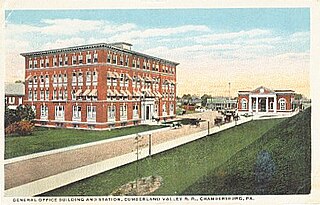
The Cumberland Valley Railroad was an early railroad in Pennsylvania, United States, originally chartered in 1831 to connect with Pennsylvania's Main Line of Public Works. Freight and passenger service in the Cumberland Valley in south central Pennsylvania from near Harrisburg to Chambersburg began in 1837, with service later extended to Hagerstown, Maryland, and then extending into the Shenandoah Valley to Winchester, Virginia. It employed up to 1,800 workers.

Barkley L. Hendricks was a contemporary American painter who made pioneering contributions to Black portraiture and conceptualism. While he worked in a variety of media and genres throughout his career, Hendricks' best known work took the form of life-sized painted oil portraits of Black Americans.

Ellen Powell Tiberino (1937-1992) was an African American artist who was figurative and expressionist in her pastels, oils, pencil drawings and sculptures. Her works were infused with the experiences and history of Black people, women in particular, whom she most often painted in dark and haunting hues. She was a prolific artist, working against time as she battled cancer for the last 14 years of her life.
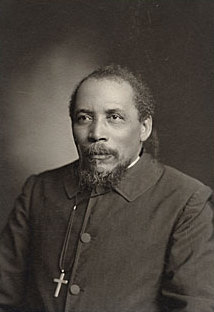
Benjamin Tucker Tanner was an American clergyman and editor. He served as a bishop in the African Methodist Episcopal Church from 1886, and founded The Christian Recorder, an influential African American Methodist newspaper.

The Young Sabot Maker is an oil-on-canvas painting made by the American artist Henry Ossawa Tanner in 1895. The painting was accepted for the 1895 Paris Salon and was Tanner's second Salon-entered painting.

The Banjo Lesson is an 1893 oil painting by African-American artist Henry Ossawa Tanner. It depicts two African-Americans in a humble domestic setting: an old black man is teaching a young boy – possibly his grandson – to play the banjo.
Robert Douglass Jr. was an African-American artist and leading activist from Philadelphia.
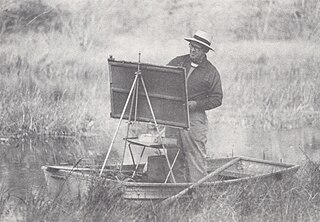
Roswell Weidner was an American artist known for his paintings, charcoal and pastel drawings, and prints. His subject matter included still life, landscapes, and portraits. He was a student at the Pennsylvania Academy of the Fine Arts (PAFA) city school and country school in Chester Springs, and the Barnes Foundation. He worked in the Works Progress Administration Arts Project during the Great Depression and in a shipyard as an expediter during World War II. Weidner began teaching at the Pennsylvania Academy of the Fine Arts in 1938. He was associated with the academy for 66 years, first as a student and later as a teacher, until his retirement in 1996.

The Thankful Poor is an 1894 genre painting by the African-American painter Henry Ossawa Tanner. It depicts two African Americans praying at a table, and shares common themes with Tanner's other paintings from the 1890s including The Banjo Lesson (1893) and The Young Sabot Maker (1895). The work is based on photographs Tanner had taken, and is influenced by his views on education and race, which were in turn derived from those of his father, Benjamin Tucker Tanner, and the African Methodist Episcopal Church. The painting is considered a milestone in African-American art, notably for its countering of racial stereotypes.

The Annunciation is an 1898 painting by the African-American painter Henry Ossawa Tanner. It depicts the biblical scene of the Annunciation, where the archangel Gabriel visits Mary to announce that she will give birth to Jesus. The painting is held by the Philadelphia Museum of Art.

Louis B. Sloan was an African American landscape artist, teacher and conservator. He was the first Black full professor at the Pennsylvania Academy of the Fine Arts (PAFA), and a conservator for the academy and the Philadelphia Museum of Art. Although he painted urban neighborhoods and other cityscapes, he was mostly known for his plein-air paintings.
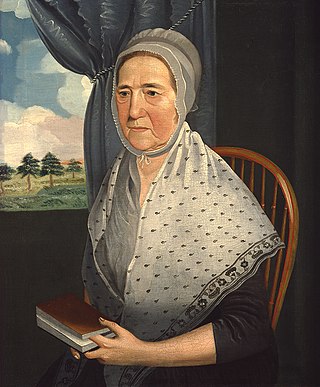
Jacob Frymire was an American itinerant painter.
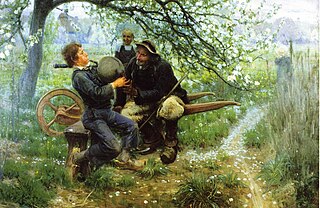
The Bagpipe Lesson is a painting by Henry Ossawa Tanner, completed in late 1893 and displayed at the World's Columbian Exposition and at the Pennsylvania Academy of the Fine Arts 63rd annual exhibition, held from December 18, 1893 to February 24, 1894. The painting was begun by Tanner during his first summer in France, during a trip to Brittany. He finished the work in Philadelphia.

Sarah Elizabeth Tanner was active as a missionary worker and a religious leader in the African Methodist Episcopal Church.

Nicodemus Visiting Christ is a painting by Henry Ossawa Tanner, made in Jerusalem in 1899 during the artist's second visit to what was then Palestine. The painting is biblical, featuring Nicodemus talking privately to Christ in the evening, and is an example of Tanner's nocturnal light paintings, in which the world is shown in night light.





















